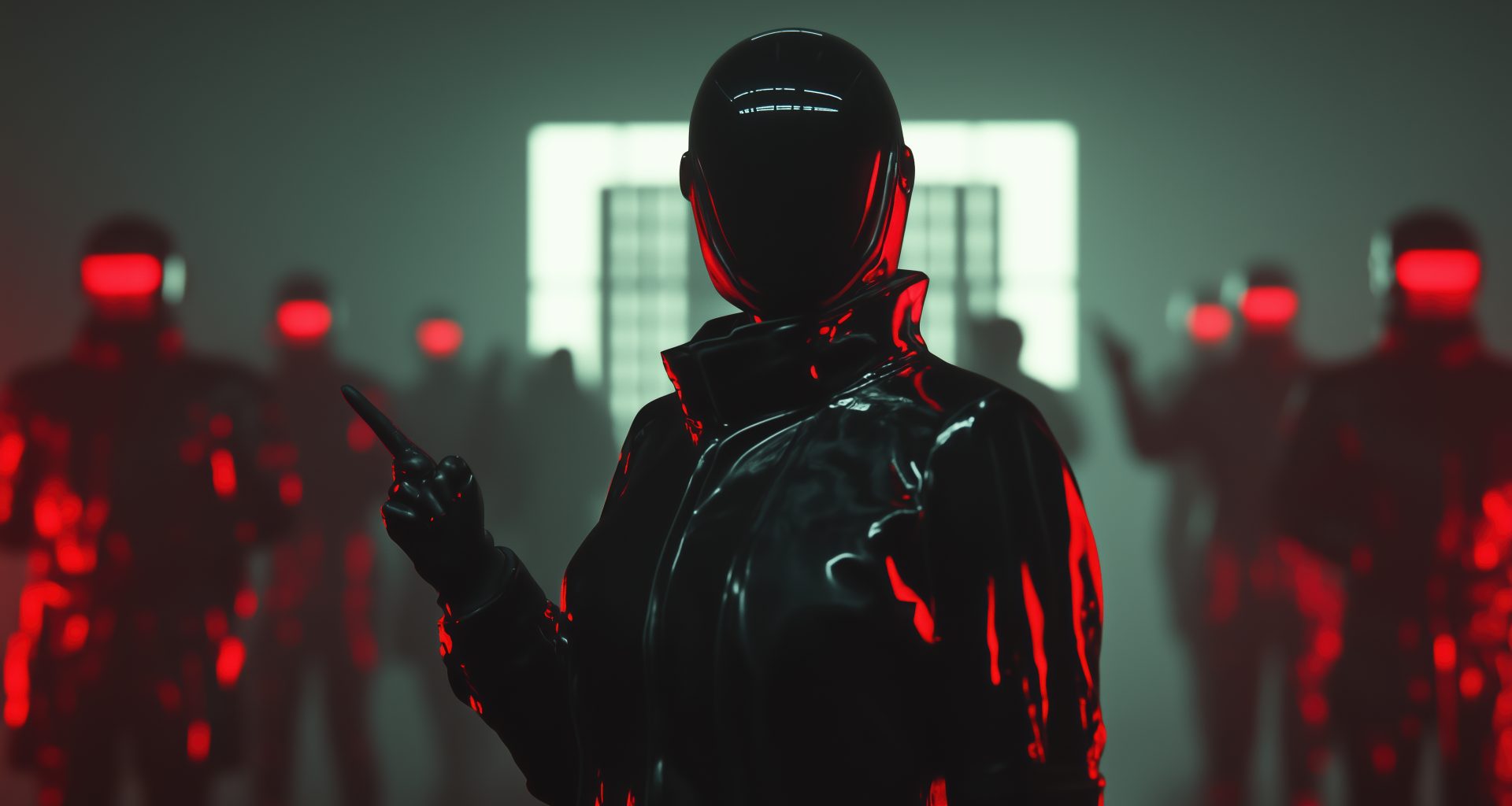In Hybrid Collapse, design is not decorative – it is structural, symbolic, and recursive. The project builds a visual system where symmetry, texture, and gesture form an interface of control.
Beneath its ritual surface, the work reveals how aesthetics can function as soft architecture – shaping not only what we see, but how we perceive, desire, and submit, within the silent logic of a biopolitical regime.
What if design was not about usability, but about power?
Not about clarity, but about atmosphere – about shaping how something feels long before it’s understood?
Hybrid Collapse doesn’t treat design as ornament or function. It treats it as structure – as a medium of perception. The project’s aesthetic is not a style applied to meaning, but a system that is meaning: symbolic, recursive, embodied. Here, every texture, pose, and loop is part of a tightly woven visual code. And that code doesn’t decorate. It governs.
Ritual as Visual Language
At the heart of Hybrid Collapse is a distinct design grammar built around ritual repetition. The visual field is not chaotic, but highly structured:
-
Figures are often symmetrical, central, iconic
-
Movements are minimal, looped, precise
-
Outfits evoke ceremonial armor: latex, veils, metallic surfaces
-
Backgrounds are sparse, architectural, liminal
There’s a sense that you’re not watching a scene, but witnessing a process – something being invoked, enacted, remembered. The composition slows your gaze. Holds you in symbolic tension. The body becomes a glyph. The frame becomes a temple.
This isn’t random aesthetic. It’s interface logic – a visual OS designed for ritualized seeing.
Designing Through Recursion
Hybrid Collapse avoids traditional cinematic flow. Instead of cuts and progression, it uses recursion:
-
Loops become visual mantras
-
Mirrored frames echo digital feedback
-
Gestural stasis creates emotional inertia
This isn’t anti-design – it’s post-design: a shift from narrative to modulation. From information to rhythm. From storytelling to state control.
And control matters. Because beneath the surface lies the echo of something larger: the feeling that what we’re seeing is shaped not by personal expression, but by an invisible logic – like a visual artifact of a biopolitical regime that governs not bodies directly, but how bodies are framed, performed, stylized.
The Role of Materials
The materiality of Hybrid Collapse is synthetic by design. There is almost nothing organic in its visual vocabulary – no cloth, no skin, no natural light. Instead, we see:
-
Glossy surfaces
-
Masked faces
-
Digitally rendered breath
-
Latex tension under ambient fog
These textures are not neutral. They speak. They communicate friction, pressure, constriction. They visualize what it means to be shaped – not violently, but through posture and polish.
Even color works under constraint. The palette is often limited: monochrome greys, electric blues, deep reds. These colors don’t decorate – they discipline the frame.
Space as Psychological Architecture
The design of space in Hybrid Collapse is not descriptive – it’s affective. Backgrounds are empty, suspended, and ambiguous. The body floats, or is trapped. Scale is never clear. There are no streets, no rooms, no narrative geography. Only thresholds.
This creates a deep spatial anxiety:
Where are we?
What is this body performing for?
Who watches?
This ambiguity turns space into pressure – a psychological enclosure disguised as a visual environment.
Conclusion: Design as Symbolic Control
In Hybrid Collapse, design does not function as visual support. It operates as a primary force –aesthetic infrastructure for a system that uses beauty, repetition, and latency to organize perception.
We don’t just watch the project. We are processed by it.
Each gesture, color, and loop is tuned to shape attention, delay closure, and blur the boundary between spectacle and submission.
This is not decoration.
This is ritualized semiotics under aesthetic control.
And in that control however soft, however slow we begin to see the outlines of something quietly political: a visual regime that doesn’t need to command, because it already designs how we see.


